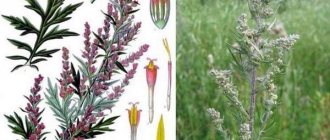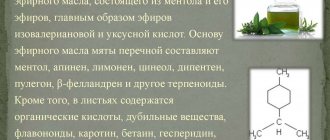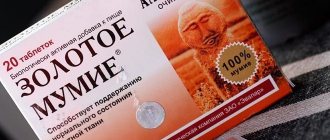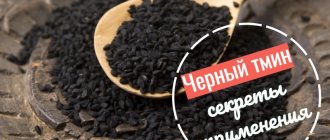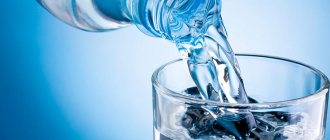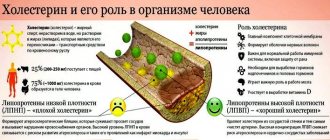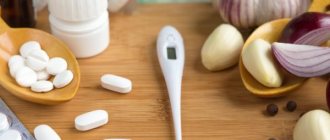Carotene - provitamin A – a real natural elixir for good health and active longevity. This is a means of improving health and preventing many diseases, recommended for athletes and people leading an active lifestyle, and also necessary for a number of diseases.
Everyone knows about the benefits of vitamins from a very early age. But perhaps not everyone can answer what provitamins are. Having learned from this article about provitamin A (carotene), you will understand what an important biological role these substances play in our body, serving as chemical materials for the biosynthesis of vitamins. Why and in what quantities is it necessary to obtain carotene from food, what products contain it, is its deficiency and excess dangerous? Information about this will help you adjust your diet, making it as balanced and healthy as possible, which is necessary on the path to good health and active longevity.
Vitamin A in optimal natural form and dosage is found in beekeeping products - such as pollen, royal jelly and drone brood, which are part of many natural vitamin and mineral complexes: “Leveton P”, “Elton P”, “Leveton Forte”, "Elton Forte", "Apitonus P", "Osteomed", "Osteo-Vit", "Osteomed Forte", "Eromax", "Memo-Vit" and "Cardioton". That is why we pay so much attention to each natural substance, talking about its importance and benefits for a healthy body.
Carotene - provitamin A - from the group of carotenoids
What kind of substance is carotene - provitamin A, so important for the human body? In fact, carotene refers to its three molecular varieties: α-, β- and γ-forms, discovered in 1831 in carrots, from which they got their name (compare with Latin carota and English carrot). They are part of the group of carotenoids - yellow, orange and red pigments of plants, fungi and bacteria, algae and corals. Of the 600 recorded carotenoids, 50 are present in human foods, and 10 are present in significant quantities in our blood as antioxidants - protectors against free radical processes.
Of the α-, β- and γ-forms of carotene, β-provitamin A is endowed with the greatest biological activity. The structure of its molecule allows it to be transformed into two molecules of vitamin A (retinol) during oxidation in the intestine, therefore it is beta-carotene that is meant first of all when it is said about provitamin A. The bright yellow-orange color in plants, as a rule, indicates the presence of this pigment in them, although it is also present in green leaves and fruits. As a food additive, it is designated by code E160a and is used as a coloring agent in juices, baked goods, etc.
Daily vitamin requirement for humans
How much vitamin do you need?
The body requires from 600 to 2800 mcg of vitamin A per day, depending on the age, gender and condition of the person. The permissible intake portions of this substance should not exceed 3000 mcg/day.
Nutritionists advise men to consume 900 mcg, women - 800 mcg, newborns up to six months - 400 mcg, infants from 6 to 12 months - 500 mcg, children under 3 years of age - 300 mcg, children from 4 to 8 years - 400 mcg.
During pregnancy, a woman's daily requirement increases to 2800 mcg. During lactation, mothers need to provide 2800 mcg of retinol, since, as a rule, up to six months, infants receive all biologically active compounds only from breast milk.
What are the benefits of carotene - provitamin A?
- Carotene - provitamin A - is a powerful natural antioxidant . Antioxidants neutralize free radicals, which are dangerous to our health - unstable substances that include an atom with an unpaired electron. It is this “insidious” atom, striving for stability, that takes away the electron it needs from its “neighbor.” And thereby makes it, in turn, inferior, and the cell – deformed or destroyed. And a chain reaction, capable of leading to the most fatal consequences, has been launched. But our diseases are sick cells. But, fortunately, life-saving antioxidants are entering the battlefield for our health, a prominent example of which is beta-carotene. Its molecular structure (as many as 11 unsaturated bonds) allows it to intensively bind free radicals and harmful active oxygen. Thus, carotene prevents the development of tumors, exposure to radiation and other free radical processes. It can safely be called a radioprotective, anticarcinogenic and antimutogenic substance.
- By protecting cells from destruction, carotene - provitamin A - facilitates the functioning of our immune system. So if you want to get sick less during epidemics or recover faster from an illness, then beta-carotene is your sure help in strengthening the body’s defenses. Elderly people and those whose diet is far from ideal should especially pay attention to this valuable substance. For this category, a significant adaptogenic, immunostimulating effect has been confirmed by many studies. It is associated with an increase in the activity of T lymphocytes, macrophages and interferon, which accelerate immune responses.
- As a source of vitamin A , carotene is much preferable, since it does not have strong toxic side effects, which are characteristic of vitamin A taken orally in ready-made form. An overdose of the latter causes serious disorders of the digestive system, aching joints, itching and other symptoms of hypervitaminosis. The same cannot be said about carotene. Deposited in subcutaneous fatty tissues, it is converted into vitamin A at the request of the body itself - in the quantities it needs, no more and no less.
Drug overdose
If the patient exceeds the permissible dose of Retinol, taking much more capsules than prescribed, symptoms of a drug overdose are possible:
- severe dizziness;
- abdominal pain and diarrhea;
- dehydration of the body;
- peeling of the skin and peeling of small parts of the skin;
- bleeding gums;
- feeling of dry mouth;
- peeling lips, cracked lips.
If the permissible dose of Retinol is exceeded several times or more, the patient experiences symptoms of hypervitaminosis. The body reacts to excess amounts of vitamin A with the following symptoms:
- attacks of headache;
- temperature increase;
- drowsiness and feeling of weakness throughout the body;
- nausea and vomiting;
- blurred vision;
- double vision effect,
- dry skin;
- the appearance of small spots on the body;
- pain in muscles, bones;
- jaundice;
- increased liver size;
- seizures;
- disruptions in the functioning of the heart.
In case of an overdose of Retinol, you must stop taking the drug and consult a doctor. In this case, the patient’s condition must be monitored and special therapy will be prescribed. If appropriate measures are not taken, irreversible consequences are possible.
Carotene - provitamin A in medicine
Carotene, a provitamin A, is widely used in medicine due to its pronounced antioxidant and immunostimulating properties. Beta-carotene is used for the following therapeutic and preventive purposes:
- complex impact on health with weakened immunity, chronic fatigue; during the epidemiological period, under intense physical and mental stress; weakening the impact of poor ecology;
- activation of metabolism;
- normalization of cardiovascular activity. Carotene neutralizes excess cholesterol, preventing its accumulation in blood vessels - that is, atherosclerosis. Prevention of angina pectoris, cardiac ischemia, heart attack and stroke, etc.;
- lack of vitamin A;
- prevention and treatment of eye diseases - night blindness (weakened vision in the dark), cataracts, glaucoma, etc. In the absence of provitamin A, the conjunctiva and cornea are at risk of softening;
- acceleration of growth and restoration of bone tissue;
- in dermatology, its wound-healing and anti-inflammatory effect has been adopted, and in general it has a beneficial effect on the mucous membranes and skin. Carotene is used to treat burns, psoriasis, furunculosis, trophic ulcers, etc. Solutions and ointments with this substance are applied to the affected areas;
- therapy for diseases of the gastrointestinal tract: carotene increases gastric secretion, fights gastritis and ulcers;
- It is also used to treat genitourinary problems, Alzheimer's disease, and AIDS;
- after an x-ray, it is recommended to increase the consumption of provitamin A;
- The need for carotene increases in pregnant and lactating women.
Vitamin A in oil: instructions for use
In this form, vitamin A is most often prescribed for the following diseases:
- various arterial pathologies;
- abnormal skeletal development in children;
- weak immunity;
- during rehabilitation after treatment for drug or alcohol addiction;
- nervous system disorders.
Also, many manufacturers of cosmetic products use oil solutions of vitamin A to create their products. As a rule, 1 ml of such a solution (3.44%) contains 100,000 mg of retinol. One drop of a solution of this concentration will contain 3000 mg of the active substance.
This dosage is ideal for the prevention of infectious diseases. Acute forms of diseases may require an increase in the daily dose of vitamin A to 100,000 mg. However, such treatment should be under the regular coordination of a qualified specialist.
Carotene - provitamin A - for athletes
Carotene - provitamin A is necessary for people leading a sports lifestyle. Moreover, they, in principle, need increased amounts of many vitamins and minerals, and carotene is one of them. This is due to the intensification of all metabolic processes in the body and the faster removal of necessary substances from it - both with urine and sweat. Both as a source of essential vitamin A and as an independent nutrient, carotene is simply irreplaceable for athletes. After all, it is a powerful antioxidant, and physical activity is known to enhance oxidative processes, and therefore the growth of free radicals. So with carotene A, intensive exercise will really benefit you without the threat of starting a dangerous free radical chain.
The adaptogenic, immunostimulating, metabolism-improving and other properties of carotene will also be useful to athletes. That is why it is included in specialized vitamin and mineral complexes.
Review of vitamin A (Retinol) history type of action properties
Vitamin A (Retinol) is a representative of the class of fat-soluble vitamins, an antioxidant, and can accumulate in the body. Necessary for vision and bone growth, healthy skin and hair, normal functioning of the immune system, etc. In its pure form, it is unstable and is found in both plant products and animal sources.
History of discovery
Vit. A was discovered in 1913. Then two groups of scientists, independently of each other, found that the yolk of a chicken egg and butter contain a certain substance that stimulates the growth of animals.
After this, during the First World War, numerous cases of xerophthalmia and keratophthalmia, dryness and pathological keratinization of the sclera and cornea of the eyes were described. At the same time, the relationship of these diseases with a deficiency of butter in the diet was noted.
The substance isolated from butter was initially designated as fat-soluble factor A. Later, in 1916, it was renamed vit. A. In 1921, signs of vitamin A deficiency were described, in 1931 the structure of the vitamin was described, and in 1937, vit. A was obtained in crystalline form.
Varieties
In addition to Retinol Vit. A includes a group of vitamers, substances similar in chemical composition and in their effect. These substances are called retinoids. In addition to Retinol (Vit. A1), this includes its derivatives:
- Retinal is the aldehyde form of vit. A1
- 3-dehydroretinol (Vit. A2) – trans-isomer of Retinol
- 3-dehydroretinal is the aldehyde form of vit. A2
- Retinoic acid is the acidic form of vit. A2
- Retinyl acetate, retinyl palmitate are ether derivatives of Retinol.
These are just the basic forms. Along with them, there are many other retinoids that occur naturally or are formed in the body of humans and mammals during metabolic reactions. The functions of many of them remain poorly understood. Based on the name of the main component, A1, this vitamin is usually called Retinol.
Physical properties
The chemical name of Retinol is trans-9,13-Dimethyl-7-(1,1,5-trimethylcyclohexen-5-yl-6)-nonatetraen-7,9,11,13-ol (as palmitate or acetate). Formula – C20 H30 O. This chemical compound is a yellowish prismatic crystal with a specific odor and a melting point of 640C.
It dissolves well in fatty substances and other organic solvents - ethyl and methyl alcohols, dicyclohexane, dichloroethane. Practically insoluble in water. It is unstable in the external environment - it is destroyed under the influence of atmospheric oxygen and solar ultraviolet radiation. Other substances from the retinoid group have similar properties.
Physiological action
- Metabolism
With its participation, many redox reactions are carried out in the body. It regulates all types of metabolism. It stimulates protein biosynthesis and activates many enzyme systems.
- Immunity
Retinol is an excellent immunomodulator. It enhances the phagocytic activity of leukocytes, stimulates the production of antibodies, and participates in the synthesis of interferon and lysozyme. Thus, it strengthens the immune system and increases the body’s resistance to many types of bacterial and viral infections. It is also an excellent antioxidant that prevents free radical damage to tissues. Antioxidant and immunostimulating effects lead to the fact that atypically changed cells are recognized in time, destroyed, and cancerous tumors do not develop.
- Skin and mucous membranes of internal organs
Vitamin A normalizes the growth and division of epithelial cells and prevents excessive keratinization. Also stimulates collagen synthesis. As a result, the barrier resistance of the mucous membranes of the respiratory system, gastrointestinal tract and genitourinary system to the action of pathological agents increases. Under its action, the skin becomes elastic, without wrinkles, swelling, age spots and other signs of aging.
- The cardiovascular system
Reduces the formation of low-density cholesterol, which is responsible for the formation of atherosclerotic plaques. Being an antioxidant, it prevents sclerotic and dystrophic changes in the myocardium.
- Musculoskeletal system
Increases the strength of ligaments, bones, cartilage. Promotes bone growth in length.
- Endocrine system
Retinol is involved in the synthesis of adrenal and sex hormones. It also reduces the level of thyroxine when it is overproduced by the thyroid gland.
- Reproductive system
In men it stimulates spermatogenesis, in women it ensures the normal course of the menstrual cycle. During pregnancy, this vitamin, along with other factors, shapes the growth and proper development of the fetus.
- Visual system
It has a tremendous impact on the state of the visual analyzer. Retinal is part of Rhodopsin. This visual pigment provides light sensitivity to the rod receptors of the fundus. Retinol's precursors, carotenoids, moisturize the cornea and sclera, preventing their pathological keratinization (hyperkeratosis) and the development of cataracts. This vitamin also maintains the function of the macula, the place of greatest visual perception of the retina.
Daily requirement
| Categories | Norm, mcg | Norm, IU |
| Infants up to 6 months. | 400 | 1333 |
| Infants from 6 months. up to 1 year | 500 | 1667 |
| Children 1-3 years old | 300 | 1000 |
| Children 4-8 years old | 400 | 1333 |
| Children 9-13 years old | 600 | 2000 |
| Teenagers over 14 years of age and adult men | 1000 | 3300 |
| Teenage girls over 14 years old and adult women | 800 | 2667 |
| Pregnant women | 200-800 | 667-2667 |
| Breastfeeding women | 400-1200 | 1333-4000 |
| Elderly and old people | 800 | 2667 |
In this table, IU are international units that reflect the activity of the drug. As for Vit. And, here 1 IU corresponds to 0.3 mcg.
Signs of Deficiency
A typical manifestation of vitamin A deficiency is the so-called night blindness or hemeralopia, deterioration of twilight vision. Also on the part of the eyes, keratomalacia and xerophthalmia will be noted, manifested by softening, dryness of the cornea, redness of the sclera with pathological lacrimation. In this case, visual acuity will be reduced, and cataracts will often form.
The skin is dry, flaky, with an unhealthy color, pustular rash and reduced elasticity. Such skin creates favorable conditions for various dermatitis, psoriasis, and eczema.
The barrier function of the mucous membranes of internal organs decreases. In combination with low immunity, this will be accompanied by frequent bronchitis, pneumonia, erosive-inflammatory processes in the gastrointestinal tract, inflammation of the genitourinary system with urinary incontinence.
The reproductive system suffers - the menstrual cycle in women is disrupted, men complain of erectile dysfunction and early ejaculation. Male and female infertility often occurs.
General weakness, increased fatigue, drowsiness during the day and insomnia at night appear. On the mental side, unmotivated irritability, anxiety and depression are noted. The risk of malignant tumors increases, especially breast cancer, and for smokers and those who often suffer from colds, lung cancer.
Predisposes to deficiency:
- lack of intake of Retinol and carotenoids from food
- diseases of the gastrointestinal tract in which its absorption is impaired
- deficiency of other nutrients, in particular zinc, Vit E (Tocopherol), Vit B4 (Choline).
Vitamin deficiency, as a rule, develops with a combination of these unfavorable factors.
In addition, some conditions increase the need. This:
- physical exercise
- psycho-emotional stress
- period of growth and puberty
- X-ray studies
- taking cholesterol-lowering medications
- diabetes
- staying in an area with a hot climate
- increased load on the visual analyzer (long sitting at the computer, watching TV)
- alcohol abuse
- pregnancy and breastfeeding.
Vitamin A rich foods
Retinol enters the body with food. Contents vit. And in 100 g of food products:
| Product | Amount, mcg/100 g |
| Fish fat | 25000 |
| Cod liver | 30000 |
| Turkey liver | 8000 |
| Beef liver | 6500 |
| Chicken liver | 3300 |
| Sweet bell red pepper | 2100 |
| Green pepper | 18 |
| Carrot | 830 |
| Broccoli | 800 |
| Butter | 680 |
| Milk | 30 |
| Chicken eggs | 140 |
| Green salad | 550 |
| Cheese | 265 |
| Tomatoes | 40 |
| Green pea | 38 |
It is easy to notice that the largest amount of vit. And it is found in animal products, while there is not so much of it in greens and vegetables. Although you should not rely entirely on the data from the table. The fact is that in most well-known products, vitamin A is not represented by Retinol, but by its precursors, provitamins, carotenoids.
These substances include alpha, beta and gamma carotene. The most active of them is beta-carotene. This is a natural pigment of bright red color, which is transformed during metabolic processes.
There is especially a lot of beta-carotene and other carotenoids in vegetables and fruits that have an orange-red color. Red carrots are not rich in vitamin A, as many believe, but in its provitamin, beta-carotene. In general, carotenoids are found mainly in plant foods, while animal foods are rich in Retinol - milk, cheese, cod liver and mammalian liver, egg yolk. In addition, beta-carotene is many times weaker in its activity than Retinol - 12 mcg of this provitamin is equivalent to 1 mcg of Retinol.
Synthetic analogues
The most commonly used in clinical practice are Retinol acetate and Retinol palmitate. These medications are available in the following dosage forms:
- dragee 3300 IU
- capsules with oil solution for oral administration 3300 IU
- capsules with oil solution for oral administration 5000 IU
- capsules with oil solution for oral administration 33000 IU
- film-coated tablets 33000 IU
- solution for external use 3.44%, 100,000 IU/ml
- injection solution 0.86%, 25,000 IU/ml
- injection solution 1.72%, 50,000 IU/ml
- injection solution 3.44%, 33,000 IU/ml.
Injections of oil solutions are done only intramuscularly; under no circumstances should they be injected into a vein! A solution for external use is used in the treatment of skin diseases, and preparations for internal use are used for the prevention of vitamin A deficiency and the treatment of related conditions.
To prevent the development of hypervitaminosis A, you must carefully follow the dosages determined by the doctor. Typically, drugs containing 3300 IU are used for preventive purposes, and “heavier” dosage forms are used for therapeutic purposes.
Along with Retinol acetate and palmitate, vitamin A is present in many vitamin-mineral complexes, including:
- Supradin,
- Duovit,
- Complivit,
- Vitrum,
- Aevit, and many others.
In addition to pharmaceuticals Vit. It is included in many dietary supplements and cosmetics for skin and hair care. Unlike natural Retinol, which quickly breaks down, synthetic retinoids are more stable and retain their properties for quite a long time.
Indications for use
Along with the prevention and treatment of vitamin A deficiency, synthetic retinoids are used as part of complex treatment for the following conditions:
- eye diseases with damage to the eyelids, sclera, cornea, retina - hemeralopia, retinitis pigmentosa, keratomalacia, xerophthalmia and keratophthalmia
- diseases of the stomach and intestines, consequences of operations on the gastrointestinal tract with impaired absorption of vit. A
- skin diseases and injuries - eczema, psoriasis, seborrheic dermatitis, neurodermatitis, mild burns and frostbite
- acute and chronic infections, incl. influenza, pneumonia, bronchitis, childhood infectious diseases (measles, scarlet fever, chicken pox, etc.).
- rickets in children
- malignant skin tumors, leukemia.
Metabolism
Absorption of Retinol, which is part of foods and drugs, occurs in the upper parts of the small intestine. Food contains esterified Retinol (in the form of esters) or carotenoids. In the intestinal lumen, under the action of pancreatic and small intestinal enzymes, Retinol esters are destroyed (hydrolyzed, emulsified) to form free Retinol.
Next, in the mucous membrane of the small intestine, with the participation of specific enzymes, esters of Retinol fatty acids are synthesized again. In this form, it enters the lymph and is delivered to the liver. Here it is deposited in the form of the ester compound Retinyl Palmitate. In addition to the liver, vitamin A is deposited in the lungs, kidneys, retina, adrenal glands, mammary glands, and adipose tissues.
But still, the main depot is the liver - up to 80% of vit is stored here “in reserve”. And in the form of Retinyl palmitate. In case of insufficient receipts or increased consumption, these reserves may last for 2-3 years. If necessary, Retinol is released from the liver with the participation of zinc and binds to the protein transthyretin. Next, it is delivered to the cells of organs and tissues, where it combines with retinol binding protein (RBP), which is also synthesized by the liver.
Being an alcohol in chemical structure, Retinol destroys cell membranes. Therefore, before entering the cell, Retinol is transformed into Retinal and Retinoic acid. Compared to Retinol, these compounds are softer and do not have a destructive effect on cells. Carotenoids are absorbed in the intestines 6-12-24 times worse (depending on the type). Their transformation into Retinal occurs in the cells of the small intestine with the participation of a specific enzyme containing iron.
The activity of this enzyme depends on the condition of the thyroid gland. If its function is insufficient (hypothyroidism), this process will be disrupted, and unutilized carotenoids will accumulate in the body. In this case, pseudojaundice will be noted - coloring of the skin and mucous membranes in a rich yellow color.
Vit. And it is better absorbed in combination with fats and proteins. Therefore, fasting, restrictive diets, passion for plant foods - all this complicates the absorption of vit. And it contributes to its deficiency. The absorption of Retinol is also difficult in diseases of the liver, gallbladder and pancreas, when its emulsification and hydrolysis are impaired. The unabsorbed part of vit. And in the form of various metabolites it is removed through the kidneys and intestines.
Interaction with other substances
- Zinc
Promotes the release of vitamin A from the depot. Therefore, against the background of a deficiency of this mineral, activation will be slow.
- Dietary fats and proteins
Facilitate the absorption of vitamin A in the small intestine.
- Vegetable oils, laxatives
Being fat soluble, vit. And it easily dissolves in these substances and is removed from the intestines. Therefore, regular intake of vegetable oils will lead to malabsorption.
- Enterosorbents
They also interfere with the absorption of Retinol.
- Vit. E (Tocopherol)
Prevents destruction. Therefore, vitamin deficiency. E is often accompanied by a deficiency of vit. A. For this reason, it is advisable to take both vitamins together.
Signs of hypervitaminosis
Due to the ability to accumulate, the daily dose of Retinol for children should not exceed 900 mcg, and for adults – 3000 mcg. Eating only food rich in vit. And, it is unlikely to cause hypervitaminosis A.
Although one remarkable case was described in medical practice, when a group of polar researchers decided to feast on the liver of a polar bear. In harsh climate conditions, the body of this animal has adapted to accumulate vit. And in huge quantities. And since the main depot of the vitamin is the liver, the polar explorers received real Retinol poisoning, and most of the unfortunate people died. But such cases are unique and are not the rule.
Basically, hypervitaminosis A develops with an overdose of synthetic retinoids or when they are combined with foods rich in vitamins. A. The main signs of hypervitaminosis A:
- abdominal pain, diarrhea
- nausea, vomiting
- general weakness
- hepatomegaly and splenomegaly - enlargement of the liver and spleen in size
- redness and itching of the skin, sweating at night
- pseudojaundice
- hair loss, dandruff
- drowsiness, insomnia
- bleeding gums, ulcerations in the mouth
- tenderness and swelling of soft tissues
- muscle cramps
- confusion.
Pregnant women have an overdose of vit. And it can provoke a teratogenic effect - disruption of embryonic development and the appearance of deformities in the fetus.
The trouble is that due to some similarity in manifestations, hypervitaminosis A can be mistaken for its deficiency. And then, instead of stopping taking the vitamin and changing the nature of the diet, on the contrary, they increase its dosage and take food rich in Retinol and carotenoids. To prevent this from happening, if you experience any alarming symptoms, you should consult a doctor and undergo the necessary laboratory tests.
Magnesium sulfate - instructions, application, reviews
Vitamin B1 (Thiamin) review and beneficial properties for the body
Are you at risk of carotene deficiency or excess?
Provitamin A deficiency is not described in medical practice as an independent phenomenon. However, its low consumption in general has a weakening effect on the immune system with all the ensuing consequences. An excess of carotene makes itself known more clearly - with a yellow or even orange tint to the skin, but this condition in most cases does not pose a real threat to health. Once you reduce its consumption, the body itself will remove its excess.
Smokers should not take beta-carotene as a dietary supplement. According to the results of several American and European studies, excess provitamin A in their body can be harmful, significantly increasing the risk of developing lung cancer. The mechanism of this phenomenon has not yet been fully studied, but is presumably associated with vitamin C deficiency in nicotine lovers.
When taking pharmacological drugs containing large doses of beta-carotene, it is possible to develop side effects in the form of gastrointestinal disorders, allergies and skin rashes, headaches and dizziness, anxiety and weakness. And contraindications to taking such drugs are liver and kidney diseases, alcoholism, individual intolerance (rare).
Reviews about the drug
Let us present a number of reviews from patients who took Retinol and shared their impressions of taking the drug.
Valentina, 39 years old
. I began to notice that I was seeing worse, the clarity of my vision had decreased significantly. I realized this when I stopped normally seeing inscriptions and price tags in stores, as well as distant objects. The doctor prescribed me Retinol to restore my vision. I took Retinol acetate solution once a day in the dosage that the doctor prescribed for me. After two weeks, my clear vision returned. In parallel with taking Retinol, I did eye exercises and a number of other procedures. In combination with Retinol, they helped me a lot.
Vladimir, 26 years old
. Retinol helped me a lot with a severe burn on my hand. The doctor prescribed lubricating the affected area of skin 5 times a day. The symptoms of a severe burn became easier to bear already on the first day: I no longer constantly felt a strong burning sensation. I lubricated my hand for three days and the burn healed before my eyes. Retinol is an excellent and inexpensive product that works great. Now I will always keep it in my home medicine cabinet.
Elvira, 58 years old
. I had severe conjunctivitis. The doctor will prescribe Retinol acetate. I strictly followed the course of treatment and dosage prescribed by the doctor, and the drug helped me quickly cope with the disease. It is simply irreplaceable in the complex treatment of conjunctivitis. I am very glad that Retinol did not have any side effects. In addition, during treatment I realized that Retinol is also an excellent wound healing agent. It helps with the healing of small wounds and cuts. So, I lubricated the cut several times a day with Retinol, and after two days there was no longer a trace of the cut left on the skin. I highly recommend Retinol: it is a good and inexpensive drug.
There are contraindications. Specialist consultation required
© 2020, Golub Oleg Vasilievich. All rights reserved.
What foods are rich in carotene?
Replenishing your body with carotene will not be difficult. This must be done constantly, since it does not have the property of being deposited in tissues in reserve. The record holder for its content is carrots, which contain up to 25 mg per 100 g. Sea buckthorn (10 mg/100 g), rowan (9 mg), rose hips (6.7 mg), sweet red (2 mg) and green pepper (1 mg), tomatoes (1.2 mg), parsley (1.7), dill (1.4), pumpkin (1.5 mg). You will get provitamin A in smaller quantities from melon, cucumbers, cabbage, apples, oranges, walnuts, and green peas. It is also found in products of animal origin - beef liver (1 mg), butter (0.2 mg), cottage cheese (0.06 mg), cheese (0.17 mg), eggs (0.06 mg), etc. .
Please note that light and even oxygen have a destructive effect on carotene, so it is better to consume carotene-containing products fresh, straight from the garden or branch. The exception is freezing, which helps preserve provitamin A. And one more thing! If you want to fully absorb this substance from food, then accompany it with fats. Knowing these subtleties will allow you to live not only tasty, but also healthy!

